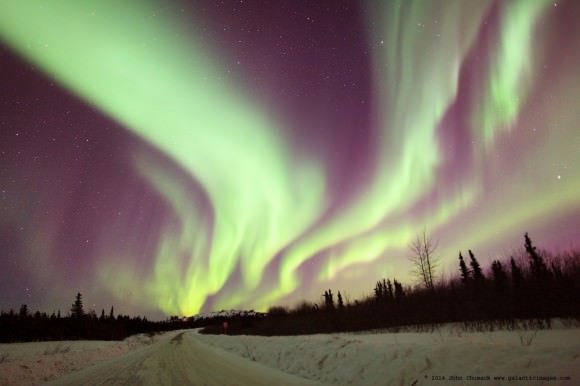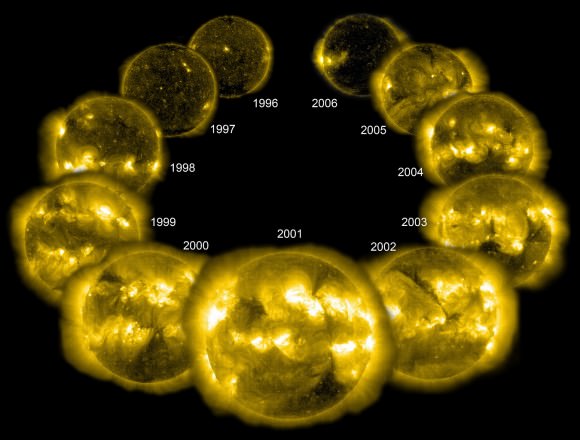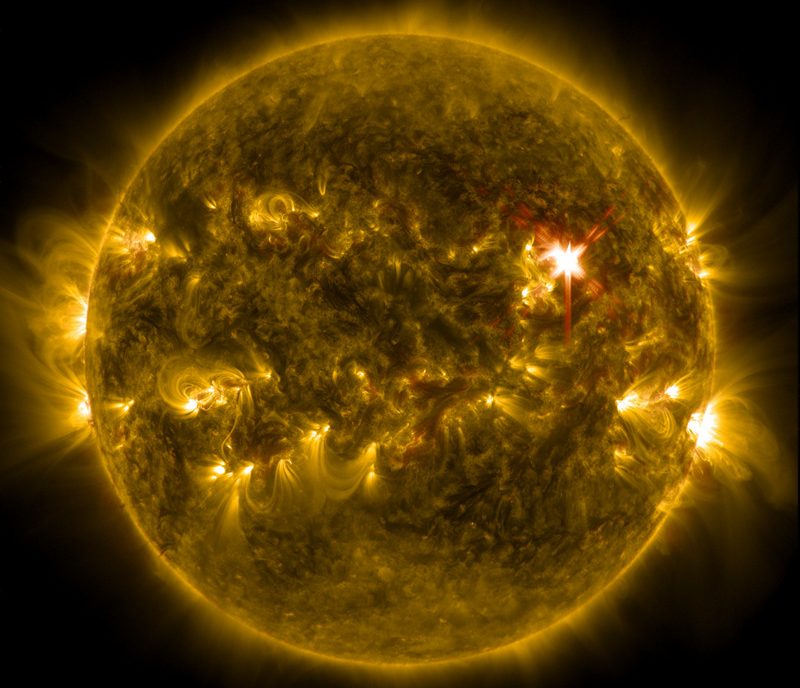If you sit at a fairly high latitude, you may want to keep an eye out your window Tuesday (April 1) and Wednesday. A powerful X-1 class flare erupted from the sun on Saturday (March 29), sparking an active space weather forecast from the National Oceanic and Atmospheric Administration.
The solar flare erupted from sunspot AR2017 and happened to be aimed at the right direction to bring material to Earth. The associated coronal mass ejections (CMEs) will send streams of particles towards our planet, which could get pulled towards the poles and cause light shows as they interact with molecules in the upper atmosphere.
“NOAA forecasters estimate a 35 percent to 60 percent chance of polar geomagnetic storms on April 1-2 when at least three CMEs are expected to deliver glancing blows to Earth’s magnetic field,” SpaceWeather.com wrote. “The best-guess forecast calls for minor G1-class storms. High-latitude sky watchers should be alert for auroras.”

At the top of this story, you can view a video of the flare from the Solar Dynamics Observatory, a NASA satellite launched in 2010 to observe the sun’s activity. This not only has applications for aurora watchers, but also for those people concerned about the effect CMEs have on Earth’s satellites, power lines and other sensitive infrastructure.
Below is an older picture from the Solar and Heliospheric Observatory, a joint NASA and European Space Agency mission that also keeps an eye on solar activity. The sun has an 11-year cycle of solar activity, and you can see peak year 2001 at the front of the image along with quieter years 1996 and 2006 near the back. The year 2014 is just off the peak for this solar cycle.
If you catch a light show, be sure to post it on the Universe Today Flickr pool, and we may include it in a future story!



“If you sit at a fairly high altitude, you may want to keep an eye out your window Tuesday (April 1) and Wednesday. ”
You mean latitude perhaps….
I do believe she meant ‘latitude’, but it would also help if we could have been given some estimate of *what* latitude. I’m at 41.33 degrees north. Will I see it?